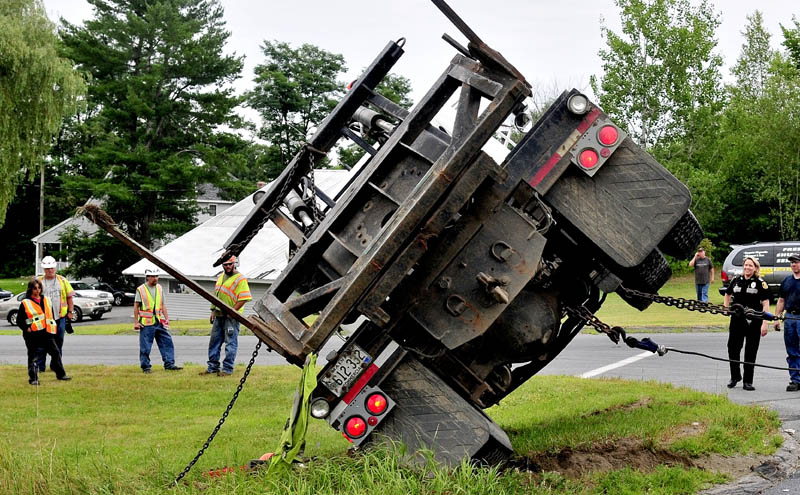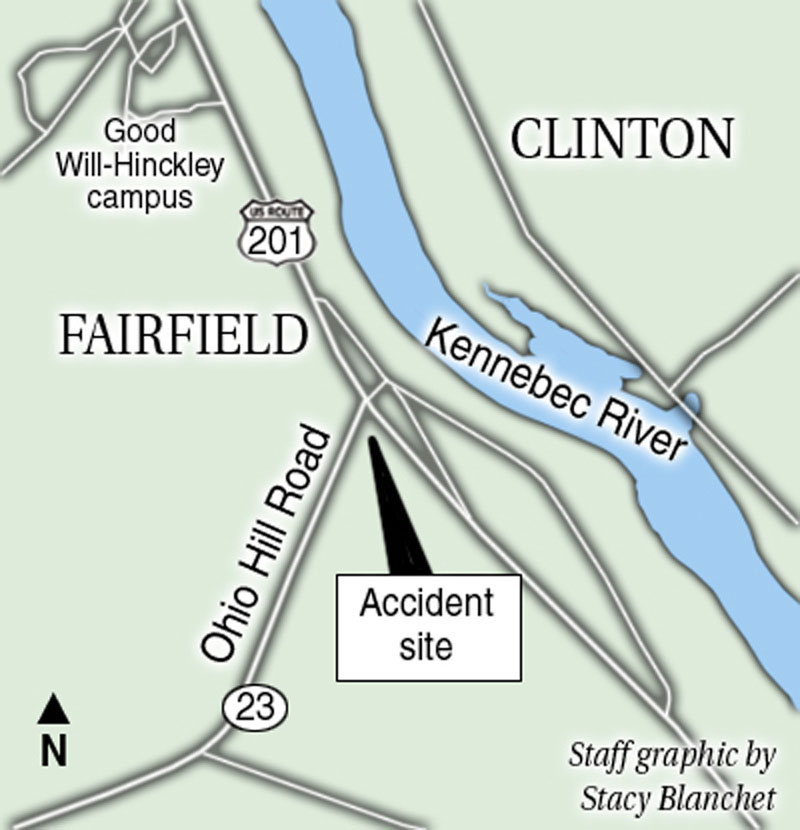FAIRFIELD — A recent collision at Nyes Corner has added to the site’s reputation for serious crashes, but data from the Maine Department of Transportation shows that there are fewer crashes at the intersection than average for a location of its type.
About 11 a.m. Thursday, two people were injured when a car was broadsided by a tow truck at the intersection of Route 23 and U.S. Route 201 — the site of more than a dozen crashes in the past decade.
Anne Gagnon, 75, of Waterville, drove into the path of a truck driven by C.J. Harvey, 34, of Canaan, and both were treated for non-life-threatening injuries at MaineGeneral Medical Center, Thayer Campus, in Waterville, according to officer Shanna Blodgett.
Fairfield Fire and Rescue Capt. Jim Lane said he has seen many accidents at the intersection during his 37 years of service.
“It’s an extremely frequent area of accidents — serious accidents. Over the years we’ve had several people die at the site,” he said.
Police Chief John Emery, on the other hand, said the site’s danger is more in the realm of legend than fact.
“It’s not that we have a lot of them, but when we do they’re very serious,” Emery said. “People seem to remember these accidents because when you have a collision there, it’s at a high speed, which typically results in a serious injury or fatality.”
Duane Brunnell, an analysis manager at Maine Department of Transportation, said data supports the chief’s assertion. Crashes are below average at Nyes Corner when compared to other intersections on rural highways.
“Maine identifies high-crash locations statewide, and those are locations that experienced eight or more crashes during the most recent three-year period,” Brunnell said.
In the period between 2009 and 2011, there were two crashes at Nyes Corner, Brunnell said. Since 2003, there have been 14 crashes.
In April, a man was flown to Central Maine Medical Center by LifeFlight Helicopter after a three-car crash at Nyes Corner. One other person was taken to the hospital in that incident. A driver of one of the cars failed to stop at the intersection, according to newspaper archives.
Three years earlier, in April 2009, Tara Hart, 24, of Oakland was driving east on Route 23, also known as Ohio Hill Road, when she failed to stop at the intersection and was struck and killed by a southbound truck, according to newspaper archives. The truck driver was not hurt.
In December 2004, six people were injured in a two-car crash when one of the drivers failed to stop at the intersection. A young boy was flown to Eastern Maine Medical Center by LifeFlight helicopter, according to newspaper archives.
On Thursday, Gagnon stopped at the intersection, but then drove into the path of Harvey’s truck, Blodgett said.
Bruce Ibarguen, state traffic engineer for the Maine Department of Transportation, said he’s familiar with the intersection and has a hypothesis as to why Thursday’s accident may have occurred.
“I think there’s an inability to gauge the speed of traffic that’s approaching the stop sign,” he said. “There’s no point of reference out there. It’s a straight, flat and wide-open stretch of road There’s no shrubbery, there’s no trees, no signs to judge against.”
Ibarguen said the intersection is below average for crashes, but that doesn’t mean the state won’t take action to mitigate future crashes. After Thursday’s crash, he has considered adding shrubs or other plantings near the roadside, which is maintained by the state not the town.
“That way a driver at the stop sign could look down the road and say, ‘Wow that vehicle is going past those things really fast,'” he said.
Lane said an optical illusion might be one reason some eastbound drivers fail to stop at the intersection. He said a white house on the opposite side of U.S. Route 201 makes it appear as though Route 23 continues without interruption. He said a blinking stop sign or reflective signs on the opposite side of the intersection might improve safety.
Town Manager Joshua Reny said he doesn’t believe mitigation would have prevented some crashes.
“Some of the accidents in the past few years have involved people who drive the road regularly. A few of them were caused by driver inattention,” he said. “My understanding is the number of accidents is not excessive, but, when they occur, they tend to be pretty serious because it’s a 55-mile-per-hour zone and vehicles are moving along at a good clip.”
Send questions/comments to the editors.





Success. Please wait for the page to reload. If the page does not reload within 5 seconds, please refresh the page.
Enter your email and password to access comments.
Hi, to comment on stories you must . This profile is in addition to your subscription and website login.
Already have a commenting profile? .
Invalid username/password.
Please check your email to confirm and complete your registration.
Only subscribers are eligible to post comments. Please subscribe or login first for digital access. Here’s why.
Use the form below to reset your password. When you've submitted your account email, we will send an email with a reset code.